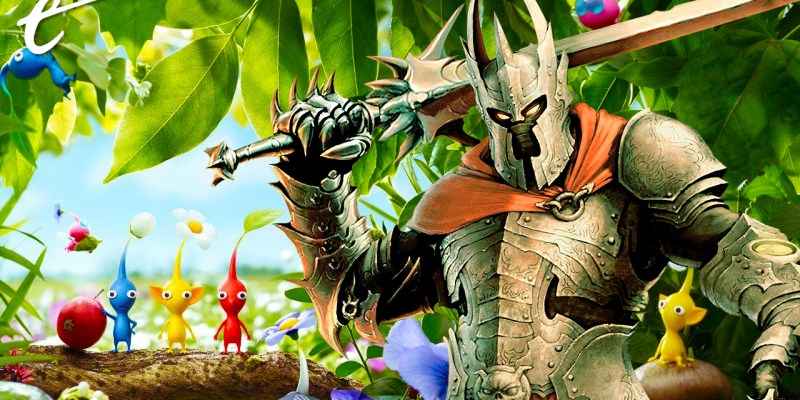Do you remember the Overlord games? No, they didn’t have anything to do with Bad Robot’s Overlord (2018) – arguably the best unofficial adaptation of Return to Castle Wolfenstein. Instead, they were this charming and off-beat mix of action RPG and real-time strategy from an unusual point of view: that of a resurrected ancient evil in a fantasy world. Yup, they belonged to the “it’s good to be bad” subset of RPGs.
In a way, Overlord felt like a multiplatform answer to Microsoft’s Fable series. By and large, the focus was put on a protagonist that could do either good or bad, affecting both the world and certain aspects of the story. Well, actually, Overlord games let players “be evil… or really evil.” This, of course, led to tons of dark humor and satire of the traditional fantasy settings and storylines. With the release of Pikmin 4 (my first contact with Nintendo’s long-running weirdo saga), I’ve been thinking about Overlord recently, and how that Switch game’s success proves it’s time for that classic tale of evil and eviler to make a return.
I was well aware that Pikmin games were a distinct take on the RTS genre, but I was still surprised by the large amount of elements that were brought over from other genres and allowed to flourish (like Pikmins) in surprising and often cute ways. Perhaps more unexpectedly, this game made me dig up the two original Overlord games and start wondering who owned the rights to an IP that could fare better now than back in the late 2000s.
I had totally forgotten the Overlord games were published by Codemasters, who now belong to EA. In fact, the games are still being sold on digital platforms, unlike many titles from the PS3/360 generation that weren’t big blockbuster hits. Who knows how much money EA is making off selling them nowadays. Probably not a lot, but I completely believe either a reboot or a remake (reasonably budgeted) would do fine in the current climate. We’re slowly but steadily experiencing a shift in the AA and AAA landscape, with more and more players trying to escape overdone design templates and predatory monetization models, all while many independent studios grow larger and subsequently have a larger impact on what’s being cooked in the big leagues.
The clear winner from this situation, year after year during the Switch era, is Nintendo, the only major company who never faltered and always doubled down on new angles for game design and bold pitches. Their most famous, world-class franchises, like Zelda or Mario, give them enough financial freedom to tinker with the traditional genres and try out new stuff more often than any major player in the business. Pikmin 4 was born from this strategy and the success of Pikmin 3 Deluxe on the same platform.
Pikmin doesn’t walk among Nintendo’s biggest IPs, but it offers something that players can’t find anywhere else at the moment. Between Pikmin 2 (2004) and 3 (2013), we find Overlord and its reign of comedic terror. Mind you, Triumph Studios’ Pikmin-like IP wasn’t nearly as successful as the games full of little plant guys, but it clearly borrowed more than a few players from Olimar’s followers. I mean, there’s a reason why its two decent spinoffs (Overlord: Dark Legend and Minions) were limited to the Wii and DS.
At first, parallels between Pikmin and Overlord might be hard to establish besides the obvious “one main character bossing around an ever-growing bunch of minions” trait, but there’s so much more to dig up and compare. First of all, the protagonist lacks the power to reshape the game world on their own and fully depends on their minions’ ability to work together and neutralize threats. Secondly, both series are surprisingly concerned with how we can change nature (for better and worse), something that is typically expressed through colorful and lush environments as well as characters and beings that mess with the natural order. It’s all played for laughs, but the themes are there.
The main difference here is that the Overlord games are all about tempting the player to be the biggest bad guy around, but choices to be actually good abound, especially early on. Maybe the protagonist is destined to become King Jerk, but that doesn’t necessarily mean turning into discount Sauron just because. Back in the day, numerous reviewers pointed out how the “good deeds” kind of were an amazing joke and part of the game’s overarching satire, since several characters in the world instantly assumed you were a hero only because you weren’t feeling naughty every day of the week.
On the other hand, Pikmin 4 and its predecessors are as good-hearted as physically possible (well, if you don’t mind a bit of animal murder in self-defense), plus they’re far more committed to the RTS mechanics than Overlord. But the connection is there for everyone to notice. Overlord wouldn’t exist just because of Fable, and the fresh IP maybe only existed because there was a hunger for a different kind of strategy game during the mid-to-late 2000s.
With the lines between genres continuously becoming more and more blurred, mainly thanks to indie efforts and the impact they have on the overall gaming discourse, going back to the drawing board with Overlord doesn’t sound like a terrible idea. Moreover, the EA Originals label feels like a perfect fit for one of EA’s inherited IPs from the far (not really) past. Free the goblin-like minions, they deserve to have fun and serve their master as much as Pikmins!


